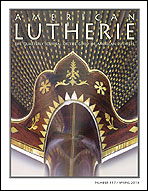 |
|
|||
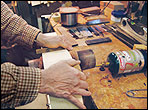 |
How I Build Forty-Eight Guitars a Year with Almost No Tooling — Part One from his 2011 GAL Convention workshop by John Greven John Greven is famous for making a lot of guitars in his basement, all by himself, with a very limited set of tools. Sound like something you might like to do? Greven gives us the step-by-step rundown. Part One is here, and Part Two will be in AL#118. |
|||
 |
Meet the Maker: Antonio Marin by Federico Sheppard Here’s a visit to an old-time, old-school, old-world guitar making shop in Granada, Spain. |
|||
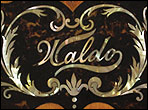 |
Finding Waldo: The First Family of American ƒ-Hole Mandolins, Mandolas, and Mandocellos by Paul Ruppa Who was the first manufacturer to produce an ƒ-hole mandolin? Nope, not that company from Kalamazoo. It was the Waldo Company of Saginaw, Michigan. But they were ƒ-hole potato bugs, not archtops. Get the inside and outside story in this issue. |
|||
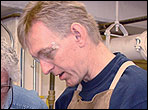 |
Meet the Maker: Robbie O'Brien by Brian Yarosh Robbie O’Brien is a can-do guy. He wanted a house, so he cut down some trees and made one. That was his first woodworking project. Before you know it he was in Brazil making guitars. Now he’s a lutherie teacher with a big ol’ YouTube channel. I wonder if he has considered doing motivational speaking on the side? |
|||
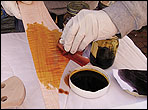 |
That Fine Fake-Old Finish by R.M. Mottola Violinmakers are not the only ones who might want to make a new instrument look old. Maybe somebody would make a left-handed acoustic bass guitar and want it to look like a 19th-century Panormo guitar. Hey, it could happen. Heres’ the quick-and-dirty way to do it. |
|||
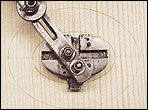 |
Elliptical Legacy by James Condino and John Monteleone John D’Angelico had a hand-cranked ellipse-cutting tool. He gave it to Jimmy D’Aquisto, and Jimmy gave it to John Monteleone. But that does not necessarily mean that the D’As used it for all of their oval-hole instruments. |
|||
| My Use of Glues in Repairing Musical Instruments by Kjell Croce There are lots of different glues in this old world, and lots of ways to use them. Here’s some ideas on when to use which. |
||||
 |
Reviews by R.M. Mottola Here’s a great lutherie book that you would love to read: Guitar Making In Nineteenth Century London by James Westbrook. And indeed you can read it, if you are sufficiently dedicated. You’ll need to go the library at Cambridge University and read it in person. |
|||
| Lutherie Curmudgeon by John Calkin In one of his less-curmudgeonly outings, Calkin muses on fishing, writing, and lutherie. |
||||
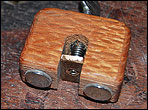 |
It Worked for Me by Carl Samuels, Jack Johnston, and Greg Nelson Carl Samuels made an upside-down bridge. Jack Johnston catches steel chips with a magnet in a pill box. Greg Nelson also uses magnets, this time to glue braces. It works for them! |
|||
| Questions edit by R.M. Mottola How do I make carbon fiber composite parts? Does padding work for spirit varnish? Would a banjo dowel neck joint work for a guitar? Can you speed up the break-in period for a guitar? Why is there air? Who wrote the book of love? Are we there yet? |
||||
 |
In Memoriam: Ken Goodwin by Harry Fleishman Harry Fleishman notes the passing of his good friend and luthier Ken Goodwin. |
|||
Web Extras |
||||
